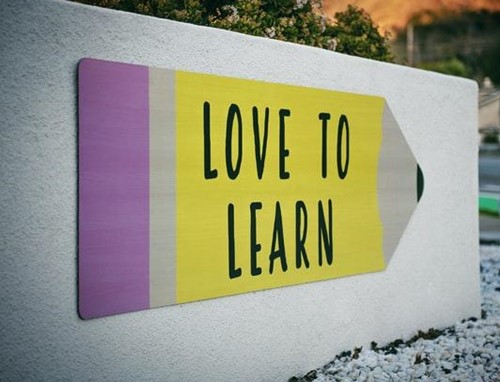Danny Swersky of New York is an educational leader with over 17 years of experience designing and developing human-centered solutions to challenges. As a people-first leader, Daniel Swersky discusses pedagogy, the science of learning, and how it’s shaping educational institutions and their teachers.
Pedagogical science is defined as "the study of teaching methods and understanding how brains acquire and keep new information." While the focus of pedagogy, otherwise known as instructional theory, is generally on the teaching of children in traditional educational settings, it can be applied to adults says Danny Swersky.
Hundreds of thousands of studies have been performed to learn more about learning and what we’ve learned has enhanced teaching practices for students and adults ever since.
Pedagogy: What Is It?
At its basic level, pedagogy references teaching styles and relates them to various theories. It's also how the teacher provides student feedback and the kind of assessments they implement, explains Danny Swersky. In a phrase, it's how the teacher leads the lesson and delivers the relevant material.
But Why Is Understanding the Science of Learning So Important?
As Barber said, "the quality of an education system can't go beyond the quality of its teachers." Thus, tutors who use practical pedagogy approaches are more likely to nurture well-learned classes.
Various studies conducted by Schwartz (2009), Barber and Mourshed (2007), and McGaw (2008) concluded that the most crucial factor in student learning is teaching. It isn't so much about the material but the behaviors, actions, and attitudes of those delivering the information.
Daniel Swersky says that teachers who understand the science of learning and different pedagogical approaches support children to reach their full potential.
The 4 Effective Pedagogy Approaches
All pedagogy approaches have a common goal — to support students so they can achieve maximum growth. It builds a solid foundation for learning, helps learners realize their capabilities, and fosters self-confident individuals.
Schools across the country aim to find teachers who understand how to implement the four methods below, so their students receive the best chance of success says Danny Swersky.
#1 Constructivism
Otherwise known as progressive teaching, it employs the idea that children are active over passive learners. In other words, they learn from practical experience and reflection- people learn by doing.
Here, the student becomes the heart and soul of the learning through play, project work, exploration, and question-based methods. It's the approach professionals like to refer to as "invisible pedagogy" as the child leads their own learning; the teacher is more of a “guide on the side” explains Danny Swersky who is a
recent Cornell alumni award recipient.
#2 Social Constructivism
Social constructivism is a branch of the pedagogical theory created by Lev Vygotsky, a cognitive psychologist, who believed learning is collaborative.
Students and teachers work together throughout the learning process, putting more emphasis on the latter.
Typically, social constructivism includes group work, teacher modeling, and class instructions to engage the class, says Danny Swersky.
#3 Behaviorism
Behaviorist pedagogy places the teacher at the center, believing they should be the authority figure leading the lesson.
With a different approach than constructivism and social constructivism, according to Daniel Swersky, behaviorism states that every subject should be taught discretely. Lessons are filled with lecturing, demonstration, choral repetition, and modeling.
#4 Liberationism
Finally, liberationism, designed by Paulo Freire, a Brazilian educator, believes education is discovery. So, for ultimate success, educators and learners must collaborate to explore various concepts.
Danny Swersky explains that in this approach, the student's voice is the center of the learning, and the classroom is the democracy. Here, the teacher is also a learner, allowing everybody to be on the same level. Sometimes, the children take the teaching role, giving them the freedom to choose the lesson's topic and be creative.

 How Pedagogy is Enhancing Teaching and Learning Methods
How Pedagogy is Enhancing Teaching and Learning Methods
Daniel Swersky believes that children have the right to high-quality learning, helping them grab their potential with both hands. And an intricate understanding of effective pedagogy methods provides them with this by:
- giving serious respect and consideration to pupils' voices.
- offering clear thinking about long- and short-term learning outcomes.
- building on students' experience and prior knowledge.
- providing a strong learning foundation.
- developing metacognition using inquiry- and dialogue-based strategies.
- being inclusive and meeting the ever-changing needs of a variety of learners.
- involving a range of techniques in lessons, including individual activities, structured group work, and guided learning.
Pedagogy: Helping Stimulate Development and Achieving the Best Learning Experience
Education comes in many modalities and most teachers develop their own style through experience states Daniel Swersky.
A thorough understanding of how students learn ultimately improves the teaching quality and children's engagement levels.
Through a blend of liberationism, constructivism, behaviorism, and social constructivism, teachers can nurture generations of learners with high self-esteem and an exceptional aptitude for learning.

 How Pedagogy is Enhancing Teaching and Learning Methods
Daniel Swersky believes that children have the right to high-quality learning, helping them grab their potential with both hands. And an intricate understanding of effective pedagogy methods provides them with this by:
How Pedagogy is Enhancing Teaching and Learning Methods
Daniel Swersky believes that children have the right to high-quality learning, helping them grab their potential with both hands. And an intricate understanding of effective pedagogy methods provides them with this by: